Francine Hunter McGivern: An Art of Everything
by Carter Ratcliff
For five decades, Francine Hunter McGivern has made art in such an astonishing variety of mediums, modes, and styles that one cannot easily say what kind of artist she is. Much less can we define her with any confidence, for it is impossible to find a single presence anywhere in a body of work that is geometric one moment, gestural the next, and includes photographic self-portraits that throw the very idea of a fixed identity up for grabs. Her elusiveness recalls the sea god Proteus, who delivers his prophecies only to those who manage to capture him—a difficult task because he is fluid, like the sea itself, and his shape constantly changes. Ultimately, though, Hunter McGivern is not protean but manifold, a distinction that surfaces only after a long immersion in her art. But where to plunge in? I’m going to start, almost at random, with a recent series of works on paper entitled Processive Pattern.


The process invoked by the title is guided by the I Ching or Book of Changes, an ancient Chinese method of divination. Hunter McGivern begins by throwing three coins, thus determining the choice of one of 64 hexagrams: stacked combinations of six lines, some broken and some solid. She does this several more times, selecting by this chance method the hexagrams to be stenciled onto a sheet of paper. Usually, the next step in the process is to consult a guide to the concepts attached to each of the hexagrams and try to grasp the meaning of their interplay. For all we know, Hunter McGivern does this. What we know for certain is that she intervenes at this point, arranging the hexagrams according to her own purpose—repeating them, tilting them, layering them. These procedures result in symmetries, striking and rendered all the more powerful by the patterned play of color the artist adds to each hexagram. From the I Ching, Hunter McGivern generates images with overtones of modernist painting’s geometric wing. Yet a crucial difference should be noted.

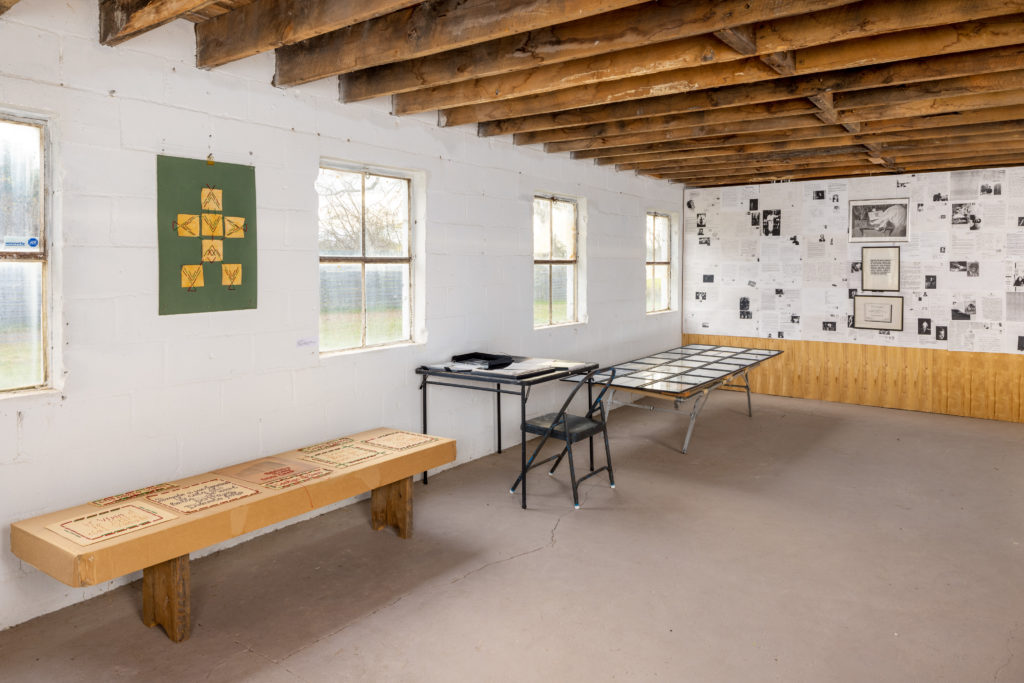

Piet Mondrian, Kazimir Malevich, Hilma af Klint, and other geometric abstractionists nearly always produced compositions: pictorial structures that bring an array of disparate form into a harmonious and asymmetrical balance. The forms in Hunter McGivern’s Processive Pattern series are identical and thus demand to be deployed not compositionally but symmetrically. The vertical and occasionally horizontal axes around which her hexagrams organize themselves establish bilateral structures like those of our bodies. It is not that Processive Pattern works represent the human body, as so many of Hunter McGivern’s earlier works do. Rather, these works have a formal—even a conceptual—affinity with our physical forms. Further, the more complex configurations in this series have postures and some even seem to gesture. Ordinarily, the I Ching is impersonal, offering its commentary on human affairs across distances enforced by randomness. The Processive Pattern works imbue the I Ching’s hexagrams, however obliquely, with a human presence.

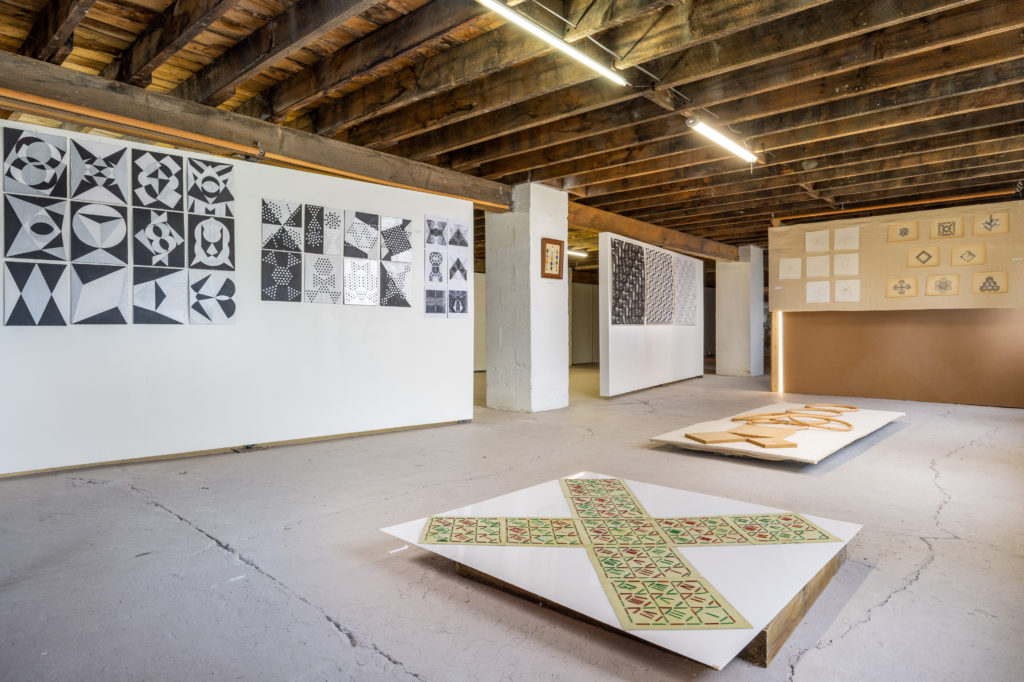
Hunter McGivern employed the hexagrams earlier, in Room 310, a series on rice paper and digitally printed paper from 2003-2005. Organizing these forms in regular, squared-away patterns, she achieves a monumental clarity that is enhanced, not undermined, by the addition of large circular configurations. More recently, the artist exchanged hexagrams for curves and acute angles supplied by drafting templates. In Compossibilities, 2020, symmetrical structures built from black, white, and silver elements achieve the scale of architecture, though no buildings, real or imaginary, are pictured. Rather, there is a feel of grand structures modulated by hints of human forms and postures. Scale in these works is flexible. And scale seems irrelevant in the Syllabus and Hermetic Cipher paintings from 2018-19, for Hunter McGivern fills them with pale, luminous colors that persuade her geometries to levitate. Released from gravity, these forms could be infinitely large or infinitely small. In 2020 she expanded the Syllabus and Hermetic Cipher series with the Ra paintings. Named after the ancient Egyptian sun god, they have a jittery energy not seen in works from the previous years and their colors are deeply saturated, as if baked into geometric form. Levitating calm has become spirited intensity, often with strong allusions to grimacing faces and gesticulating bodies. Parallel to the Ra series Hunter McGivern worked on another, entitled In Memoriam/holes.
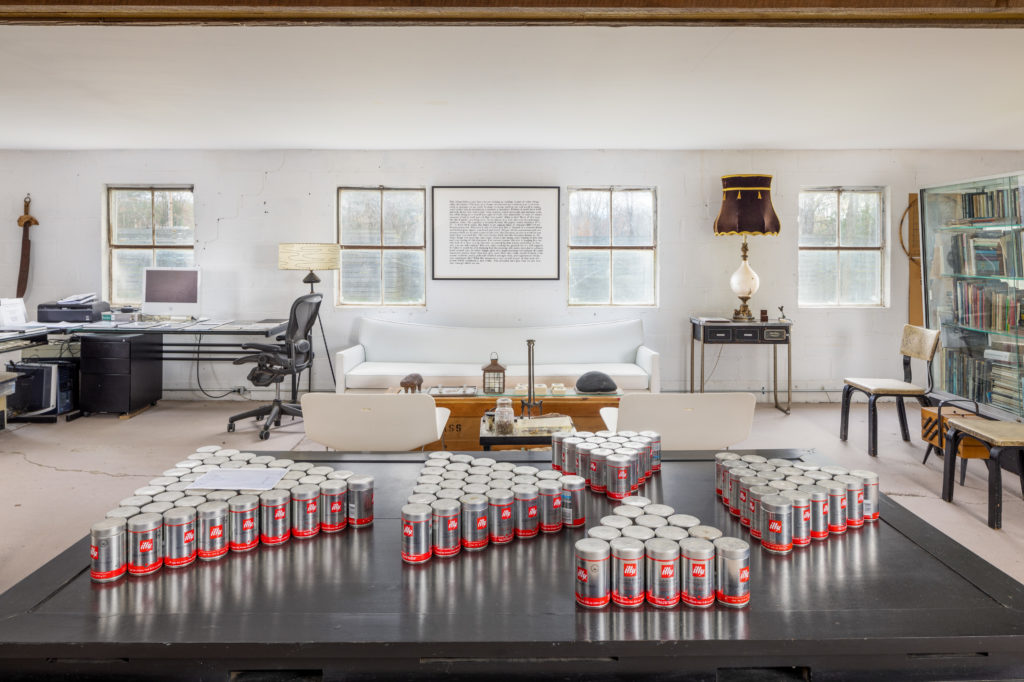
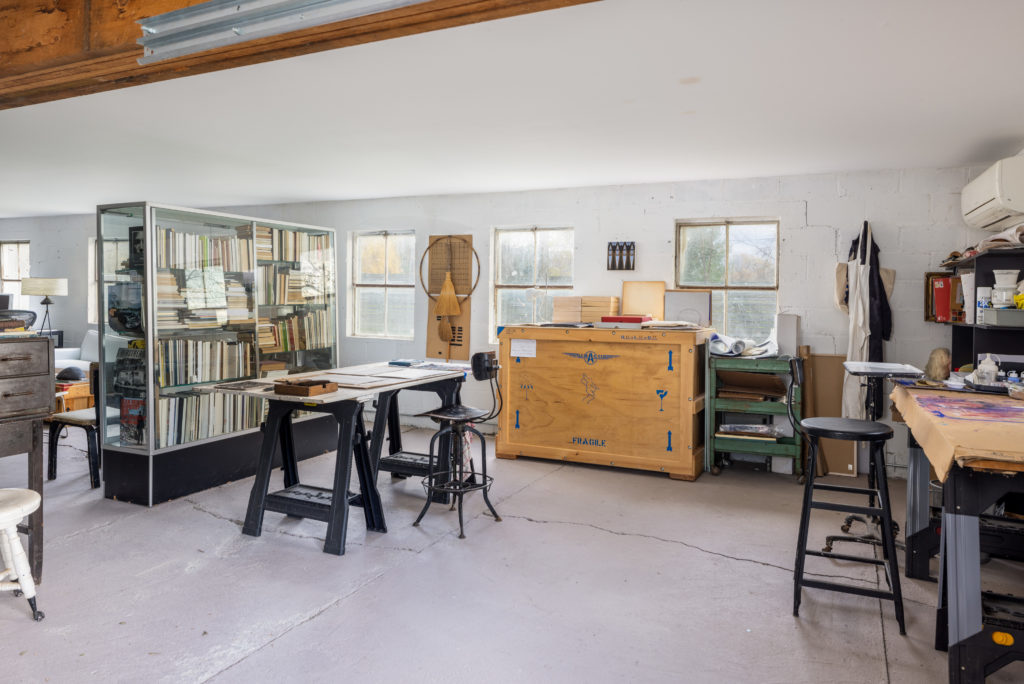
In these works, begun late in 2019, before the onset of Covid and throughout 2021, the holes symbolize loss; the memory and universal absence of those who have died in her lifetime. At first, Hunter McGivern pierced tracings from earlier paintings onto acetate transfers of images. By enlarging the piercings to larger holes in painted paper, wood panel and cardboard, the artist created variations on the geometric configurations of Compossibilities and the Hermetic Cipher series. Lacking the artist’s commentary on the In Memoriam/holes works, we would view them as variations on her other geometric pieces. To understand her purpose, we need her to tell of her grief and her need to acknowledge it with images we might well call ceremonial. She gives this account with unmitigated indifference to the modernist dictum that abstract art should stand on its own, untouched by language. To the impossible ideal of “pure art” Hunter McGivern has always responded with an exuberantly practical impurity rooted in a deep understanding that art generates its meanings from new mixtures, even conflicts, of modes and manners.



Hunter McGivern launched Jungle Red Studios in 1977. The salon was first housed in a penthouse loft on Desbrosses Street, and then from 1984 through 1987 on Franklin Street, in Manhattan’s Tribeca district. “Jungle Red” became a legendary headquarters for the artist’s activities as the producer, director, curator and participant in performance pieces, tableaux vivants, and other genres of spectacle at high-profile venues in the downtown club scene, among them Danceteria, the Mudd Club, Club Area, and Club Alibi. Hunter McGivern drew the casts of these spectacles from the clients, patrons and artist friends who frequented Jungle Red Studios, all of them denizens of the art world that was coalescing with manic energy Downtown. It was during these years that she began collecting contemporary art by exchanging services in Jungle Red with artists friends for their works. The collection includes Joseph Kosuth, Keith Sonnier, Susan Rothenberg, Caroll Dunham, Nan Goldin, Laurie Simmons, Pat Steir, and many other notables.

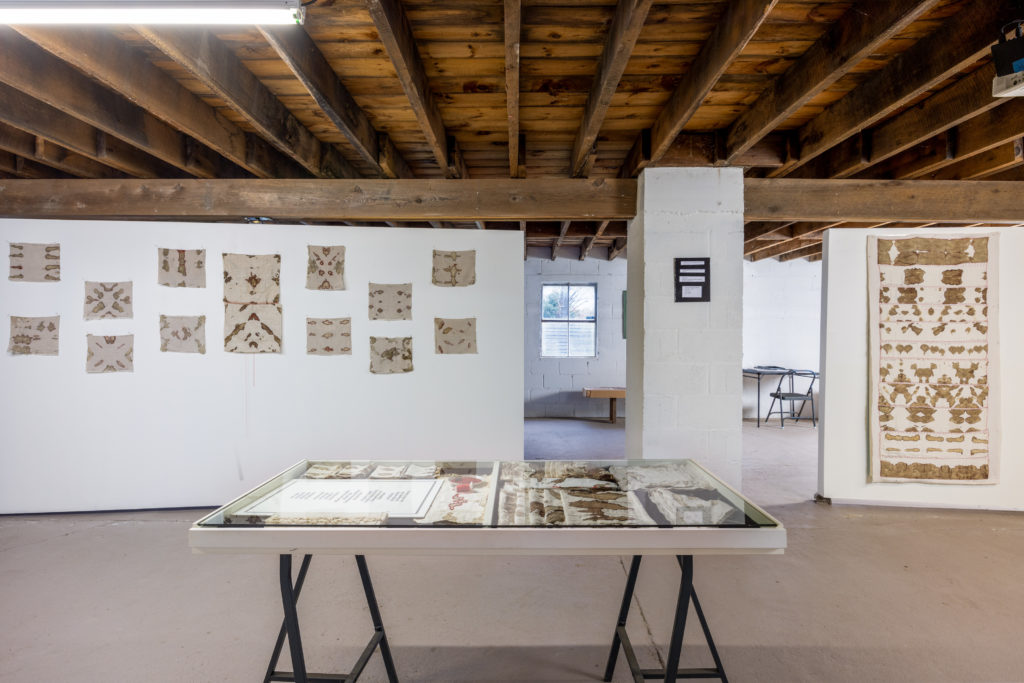

Out of this cycle of non-stop inventiveness emerged Hunter McGivern’s Performative Portraits, 1984 through 1985.In Only the Brave Stay Blonde, photograph by Stephen Lupino, she kneels in full geisha regalia and makeup with her hair, of course, incandescently blond. Nan Goldin photographed her in Endangered Species Only as a Falconess with a live falcon. Laurie Simmons photographed her in To Rule Truly is To Serve as a bare breasted idol in a gorgeously symmetrical pose in front of the Chinese Temple of Rain; and in I Come When I’m Called, she is a crowned monarch, with a palace for a backdrop. Though Hunter McGivern is recognizable in all these incarnations, it is not easy to say exactly how she is present in them. She has said that the process of creating the Performative Portraits—donning costumes designed by Ken Angelico, her Jungle Red collaborator, posing in front of carefully chosen backdrops–was, in every instance, an “out-of-body” experience. What this means, perhaps, is that these works take her from a familiar, everyday way of life to an awareness of herself as a mind with the power to shape her being—or, more specifically, her female being. Though she has never been a doctrinaire feminist, Hunter McGivern intends these works and indeed all her work to liberate her from the authority of “patriarchal thought.”



By 1982, AIDS had begun to decimate the Downtown arts and club scene; both men and women. By the end of the 1980s, so many close friends and collaborators had died of AIDS that her grief made it impossible for her to stay in New York. She commemorates them with the In Memoriam/ holes series, turning abstract form to the task of grieving. Though we can see these works solely as displays of form at its most austerely refined, those who know how deeply this art is imbued with the artist’s feelings will find here an acknowledgement that no image of those who perished could be adequate to her sense of their loss.


In 1989, Hunter McGivern traveled to Positano, on Italy’s Amalfi Coast, where she met someone who invited her to return. Living for most of the next nine years within the intense magnetic field of the Mediterranean transformed her art in ways that led to In Memoriam/ holes, Compossibilities, Syllabus and the other geometric works she has made in the past three decades. These works have their origins in the early 1970s, when Hunter McGivern began her study of metaphysics, Buddhist philosophy, numerology, and the occult with their repertories of symbols, many of them geometric.

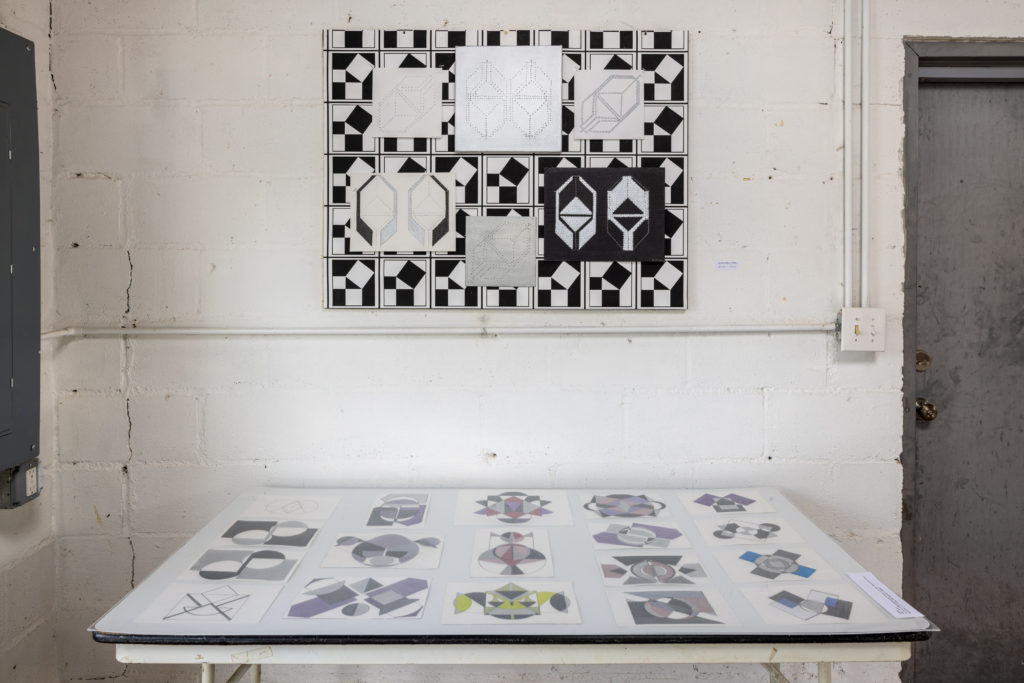
In 1994, Hunter McGivern focused on developing drawing skills. The figurative did not engage her. Her lifetime obsession with numbers, counting, and visualization of grids to locate her body in physical space led her to draw the numbers one through nine. This led to Enumerate, 1995, a 5’ x5’ gridded sculptural work of one hundred screen printed porcelain, tiles fabricated in Italy, with a sequence of patterns, in black, on white backgrounds provided by square porcelain tiles. There are nine of these patterns, each a mandala created from repetitions of a numeral from 1 to 9. Seen from a distance, a ten-by-ten array of tiles gives off a bright light at once calm and flickering. Up close, Hunter McGivern’s mandalas draw vision deep into a world of startling intricacies.
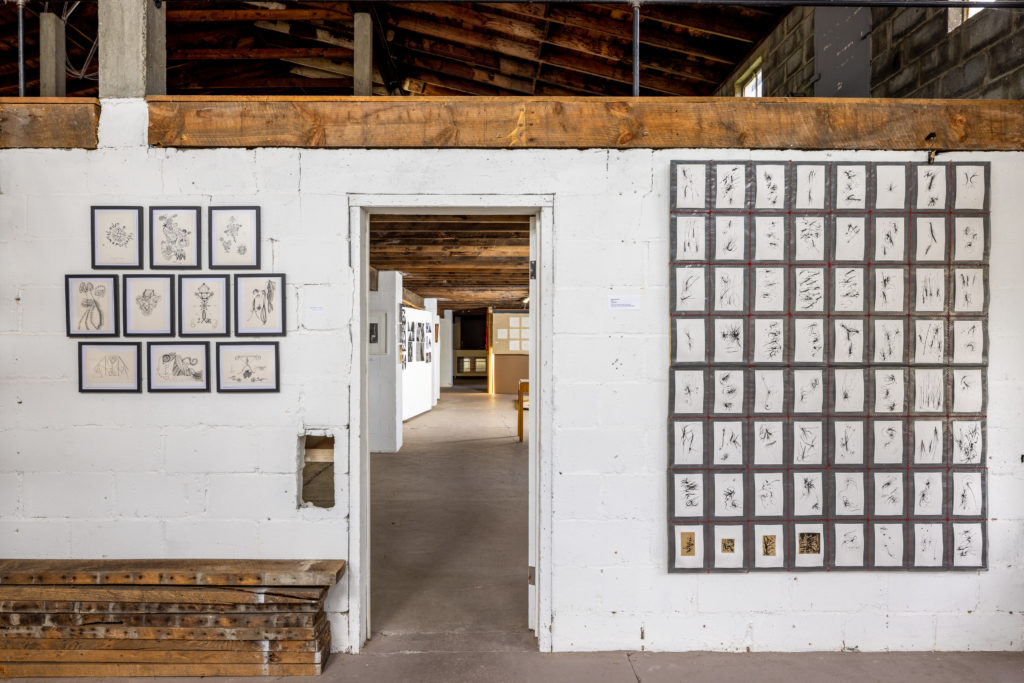
It is a long way from the Performative Portraits to Enumerate. How can work so dissimilar belong to the same oeuvre? This question is inevitable, for the art market and art history work together to convince us that an artist should produce a narrowly defined line of products. Always open to fresh possibilities, Hunter McGivern has never given this expectation a second thought. To survey her career is to confront disjunction. Yet there is a series from 1994-96—My Body Paints, My Brain Bleeds—that connects her early work, which employs the body, with later work constructed from the bodiless lucidity of geometric form.

In the late 15th century, Leonardo da Vinci integrated the body with geometry in a drawing known as Vitruvian Man, for it employs bodily proportions established by the Roman architect Vitruvius. This is a thoroughly male image. Hunter McGivern’s unification of body and geometry is flagrantly female. During the mid-1990s as perimenapause began, each month she let her menstrual blood soak into lengths of folded linen, the collection of which, over the interval until the next period, she hung on the studio wall until an image appeared to her. She then stitched together, with red silk thread, the folded, blood-soaked pieces, creating wall pieces with the structure of a grid. Each dated piece with rust-red blotches, often with the names of those who died of AIDS on those days; is contained by a right-angled enclosure. Earlier, we saw Hunter McGivern’s body from the outside, costumed to create a panoply of personas. The menstrual works insist on her inward being, physical and by extension emotional and cerebral. My Body Paints, My Brain Bleeds records this physiological, transformative process until the menstrual blood abated and her female identity morphed. Traces of the artist’s blood can also be perceived as “Rorschachs,” as she says. Some suggest body parts, flowers, or faces, while others could be birds or islands. With My Body Paints, My Brain Bleeds, Hunter McGivern maps a speculative realm where female physiology, human expression, biology, and geography flow together in vital currents.

In 2010, while living in Manhattan and traveling to visit a friend in the Hudson Valley, the artist launched a conceptual project: Investigating the role of the Kunsthalle in the 21st Century. While driving through the hamlet of Linlithgo, she saw an immense white mid-century cinder block building. Discovering that the building was unused and for sale, she bought and extensively rebuilt it. Named CR10, after its location on County Road 10, it offered 15,000 square feet of gallery space on two floors. Over the next five years, Hunter McGivern conceived, curated, and organized an impressive series of group shows and solo exhibitions by such figures as Judy Pfaff, and Lucio Pozzi. There were installations, performances, poetry readings, as well as film and video screenings. After five years, CR10 became a non for profit entity named The Frank Institute. The Frank Institute @ CR10 is currently the artist’s studio and houses her extensive archive and contemporary art collection as well as an exhibition space. The Institute now hosts Shifting Considerations, a dual retrospective of the art of Hunter McGivern and Daniel Rothbart.

At the outset of Hunter McGivern’s exhibition, one sees 64 ink drawings referencing the I Ching on paper, titled Ideographic Opera, embedded into an embroidered grid of 64 screen panels. Made in the early 1990s, each is an elegantly explosive burst of line, spatter, and blot. It is tempting to say that everything in Hunter McGivern’s vast oeuvre followed from the sheer energy of these improvisations. If this were so, it would provide a neat summary of the artist’s achievement. Her art, however, does not permit any summary, neat or messy. As we’ve seen, she is unconstricted by a single style or a narrow range of themes; she does not confine herself to one medium or even two or three. Moreover, she has invented audacious new mediums—see, for example, My Body Paints, My Brain Bleeds. Her styles and themes and mediums are myriad and devoted to the proposition our experience overflows every category devised to contain and regulate it. Her subject, perhaps, is all that we undergo as we seek all that we want and need—everything from connection with others to the order that makes us so fond of geometrical clarity. Because Hunter McGivern grapples with this vast subject in ways distinctively her own, her works show us endless facets of a manifold self not invented but discovered—or, it might be better to say, a self reborn every time she makes a work of art.
Hudson, New York, October 31, 2021
© Carter Ratcliff, 2021.